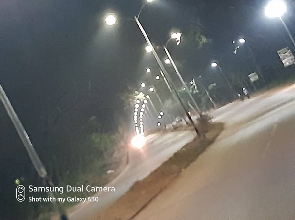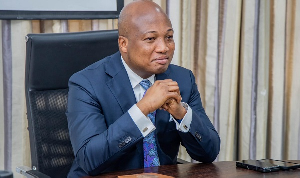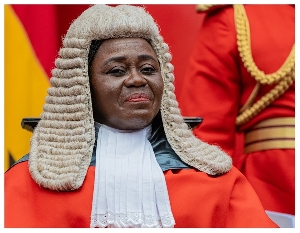Street lighting is a vital social amenity that brings about several benefits to both pedestrians and drivers including improving road safety, reducing criminal activities and increasing the general business and living climate of urban and peri urban areas.
The significance of street lightening cannot be underestimated because of the vital role street lightening plays in our communities.
The Bono Regional Chairman of the Ruling New Patriotic Party (NPP) Mr. Kwame Baffoe Abronye, says he is unsettled by the rising number of street light poles being damaged around the country especially the Bono Region by some motorists.
Kwame Baffoe Abronye disclosed that government through district Assemblies are losing an average number of street light poles due to motorists hitting into them.
According to Bono NPP Chairman, most of the road traffic accidents involving damage of street light installations happen on weekends and are not reported.
Abronye made this known during driver’s engagement he had recently in Sunyani.
However, he reiterated that motorists who happen to hit into a street light poles due to some reason must take responsibility and report to Police or the council so that arrangements to replace the pole could be made.
“When a pole is hit into and left laying down other people may taking advantage of the situation to remove fittings. Replacement of damaged poles and fittings is a costly undertaking as one pole and fittings costs not less than GHC 5000,” Abronye told them.
He said government is doing everything possible to light up the city and these efforts should be supported by all residents.
Mr. Kwame Baffoe Abronye said the face of the Bono Region, especially the capital of the region, Sunyani has improved so much due to infrastructure development taking place in the city and no one should be allowed to frustrate the efforts of the government.
Kwame Baffoe Abronye has since appealed to motorists to be responsible enough by observing speed limits on the roads to avoid mishaps leading to damage of street light poles.
He said if the circumstances leading to the damaging of the pole and indeed other public installations are beyond the motorist control, the damage should still be reported to the Council or the nearest police station.
Sunyani the Bono Regional Capital can boost of about seven-kilometre ultra-modern street lights stretching from the Sunyani Senior High School, through the Cocoa House Roundabout to the Fiapre Roundabout, and the inner city ring road stretching from STU roundabout through SSNIT Traffic, to University of Energy and Natural Resources (UENR), a beautiful sight to behold when the streetlights are switched on in the night.
Added to this beautiful spectacle are the blue and white painted poles, each of which holds two lights.
Besides this principal street, other streets in the suburbs, such as New Town stretch through Sunyani Palace to Watchman along Atronie-Ahafo highway, Area One, Area Two, Area Three, Area Four, Penkwasi, among others have streetlights.
The tremendous visibility improvement in the night in the capital and its adjoining communities of late had been attributed to the World Bank-funded Ghana Secondary Cities Support Programme (GSCSP) streetlights project.
The Ghanaian government thinks better street lighting can help tighten security, improve living standards and even boost foreign investment
Street lights are a fundamental component of any city's infrastructure, providing safety and security benefits to communities and businesses. However, the high cost of installation and maintenance can prove prohibitive for developing countries, leaving road users at risk and districts in darkness.
A 2013 publication on pedestrian safety by the World Health Organisation lists inadequate visibility as one of the key risk factors for pedestrian road traffic injuries (RTI). Pedestrians are more likely to be struck by vehicles during periods of low light such as dawn and dusk, and at night. Results from studies carried out in Australia reported a 59% reduction in pedestrian crashes following improvement in roadway lighting.
In Ghana, the rate of pedestrian RTIs is disproportionately high, making up more than 40% of all road-user fatalities. In 68% of those cases, vehicles had struck pedestrians when they were in the middle of the road.
The Ghanaian Ministry of Energy lists provision of street lights in its 16 regional capitals and some district capitals as one of its main achievements.
In a 2011 draft policy document on street lighting, the Ghanaian government stated that a "lack of adequate developmental, regulatory and operational framework on streetlights over the years has rendered their continuous expansion untenable."
Regional News of Tuesday, 4 April 2023
Source: Seth Opoku Agyemang,Contributor
Street lighting dilemma: if conventional solution won’t work let’s innovate –Abronye
Entertainment












